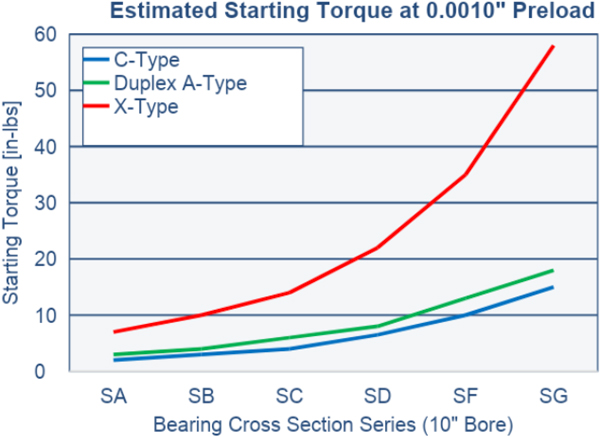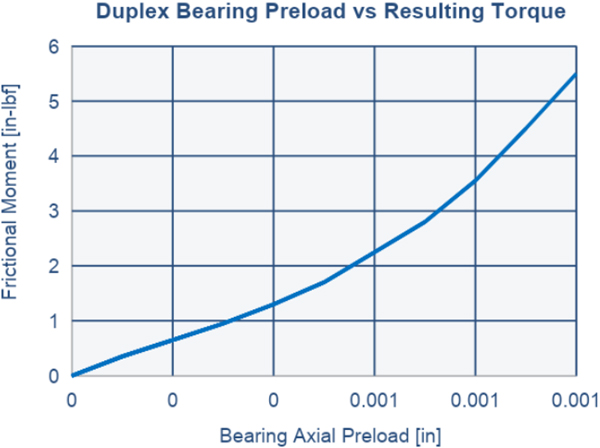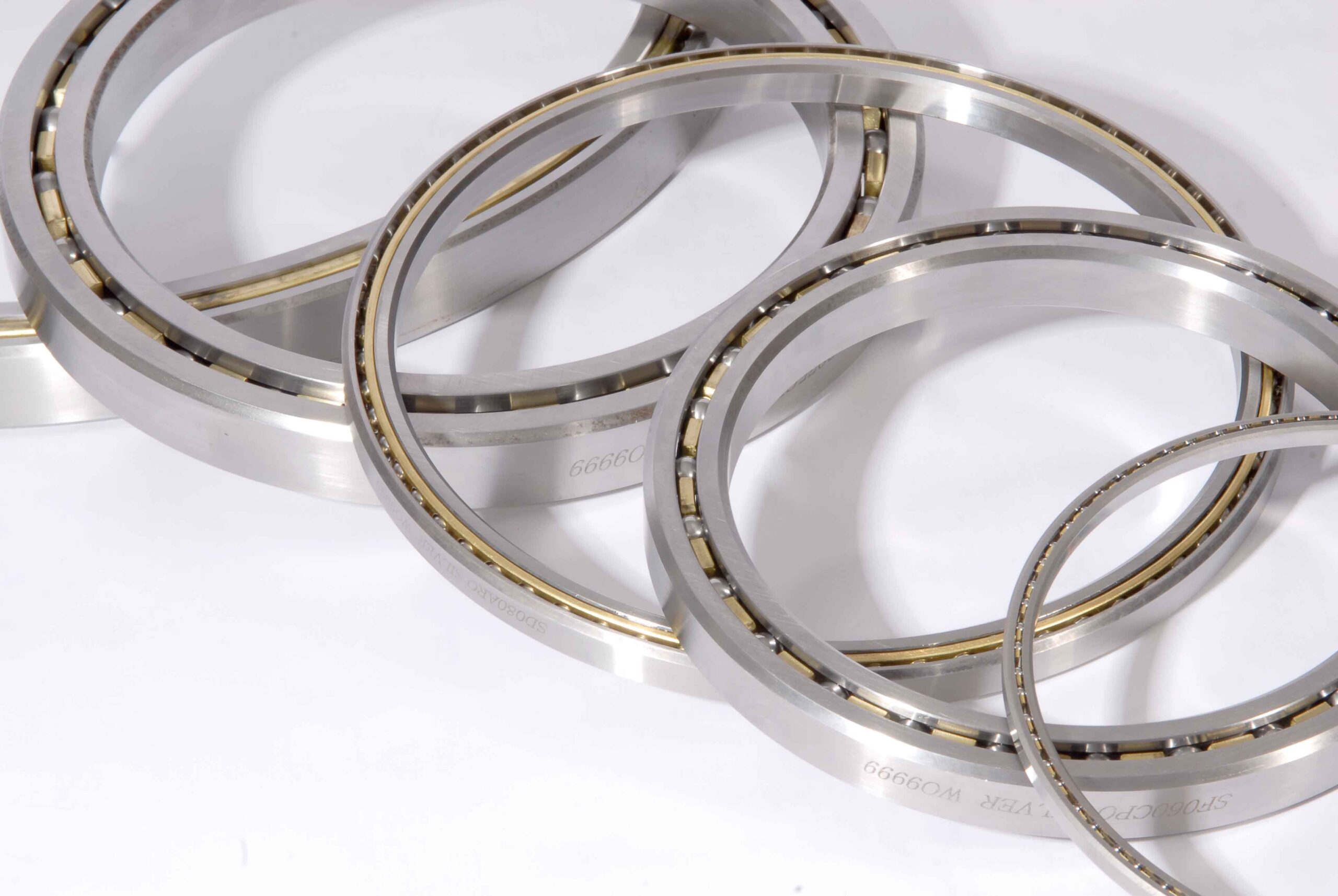Torque Considerations
Bearing Torque is referred to in many terms including Rotational Resistance and Frictional Moment. The primary drivers of torque in a bearing that Silverthin evaluates are primarily, but not limited to, Load Dependencies. Only the loading of the bearing is generally considered for resulting bearing torque. This loading can be both external (applied radial, thrust or moment loads to the system) and internal (bearing preload either built-in or induced by application conditions).
Design considerations for torque are as often as follows:
- Bearing Type, Size and Materials.
- Operating Temperature Range.
- Shaft and Housing (Mating Components) materials.
- Shaft and Housing geometry (wall thickness).
- Desired Deflection (movement) of the bearings.
- Desired Stiffness of the bearings.
- Method of Bearing Installation and Retention.
- External Loading.
- Vibration and Impact.
- Lubrication Type and Method.
Bearing Type and Size are also significant contributors to resulting Bearing Torque. As seen in the diagram below a single Type-C bearing and a duplex pair of Type-A bearings of the same size have relatively similar torque values due to preload. A single Type-X bearing contributes significantly more torque under the same preload. As the cross-section size of the bearing increases, so too does the ball size which contributes to an overall torque increase. Note that these values below are only for Preload Induced Torque. Any additional external loading will increase the torque values.
Please contact Silverthin Engineering for any needed analysis regarding preload and load effects on resulting torque for bearings suitable for your application as this is a good starting point for applications where low torque requirements are required.

Below is an example of a preload vs torque curve for a Duplex Pair of Type-A bearings. Silverthin Engineering can provide detailed analysis of expected bearing torque for a given preload and provided loading conditions.
Please contact Silverthin Engineering with questions and requests for these technical documents and specifications.

Bearings can be considered:
- Viscous torque due to lubrication is not calculated.
- Bearings are at room temperature (68°F).
- Typically, not more than 10% of a group of bearings will have torque results greater than those shown for that bearing specification.

